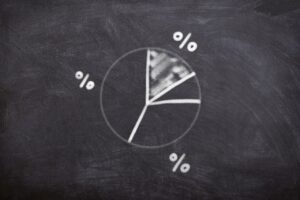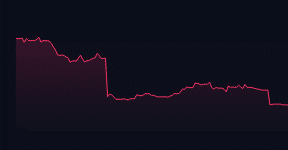Risk of Ruin – Trading Long Term – Know Your Probability

Risk of ruin (ROR) better risk management for trading long term

Is your trading profitable long term? Raise your hand if you’ve ever blown a trading account? Or, maybe you adopted a poor trading strategy, and lost a majority of your account? If something like this has happened to you, don’t feel bad. Almost all traders experience some kind of account depletion in their trading at some point. The good news is, we can learn from our mistakes in a big way. There is a single (and easy) concept you can learn which can prevent major account blowouts from happening. If you want to be able to continue trading for the long term, please turn your attention to risk of ruin.
Risk of ruin is simply the probability that your account balance will reach zero (or some kind of major draw down). Based on your trading data from your predetermined trading strategy, it is possible to calculate the chances of your account being blown out. Not can you prevent your account from being blown out, but understanding risk of ruin may help prevent you from reaching and exceeding a maximum desired draw down.
Why you need to know your risk of ruin
If you plan to trade for years, rather than months, weeks, or days then you need to know your risk of ruin. This is what I try to tell every person that is interested in trading: “If you treat the market like a slot machine, it’s going to eat your money for breakfast.” I don’t know how many times I have heard the heartbreaking stories of people who risked everything on one, two, or just a handful of trades, and ended up losing everything. All too often, people enter the market because they want to relieve an immediate financial burden, and end up getting burned because they are in a hurry to make instant profits. Knowing your risk of ruin can eliminate that fly by the seat of your pants attitude towards trading. It helps traders trade more responsibly, keeping risk in mind with every trade.
How to figure out your risk of ruin?

If I was to attempt to tell you the risk of ruin formula, you probably would run screaming for the hills. If you are a super nerd (like me) and actually want to look at the formula then you can check it out here. For the non-nerds out there, we have a better solution. We have a free, amazing, easy-to-use calculator that will do it all for you. But you need a few pieces of information related to your strategy first. In order to successfully find out your risk of ruin, you first need to set a maximum risk percentage on each trade. Next, you will need to set some rules, determine your trading strategy, and be consistent. In addition to your strategy it’s important to set a take profit goal using a risk/reward ratio, or your average profit percentage.
Once you’ve got your strategy, risk, and reward straightened out, determine how much money you would have to lose in your account that would make you really mad, via your maximum draw down. Then you need to start tracking your trades on paper (or more likely using a spreadsheet). Once you have some data recorded. You finish off by putting your numbers into our risk of ruin calculator. You can play around with different numbers as well and find a balance that works well for you. Test it out, then come back to the calculator and tweak your numbers again. See below for more detailed instructions on preparing for your risk of ruin calculation:
Set risk to percentage of your account

One of the first things you need to figure out is how much you are going to risk per trade. This is usually done as a percentage of your account. Many expert traders recommend a maximum of 2% risk per trade, and to also scale down as your account grows. So the higher your account grows, the lower the percentage you may want to risk. The idea here is simple, the lower the percentage you risk per trade the more times you can lose and still keep your account balance alive. Take this into consideration. Let’s say you have $1,000 in your account. If you risk 2% that means you could lose 50 times in a row (even more if you consider compounding) and still maintain a balance. What if you risk 1% instead? That gives you even more trades before blowing your account, 100 trades. How about .5%? That means 200 trades before blowing your account. So the lower the percentage you go, the more you can be wrong and still keep your account afloat. And believe me, you will lose some trades, and at some point you will hit a losing streak. By keeping your risk percentage low, you will keep your trading account in a much healthier position. Ultimately the number is up to you to decide, and using our risk of ruin calculator you can play around with the numbers that work best for you.
Find a strategy and stick with it

Another thing I tell traders all the time is, be consistent. I’ll be the first one to admit, that’s easier said than done, but no less important to have in place for successful trading strategies. That’s why we need very specific rules in place that we can follow every time we take a trade. If there is a flaw in your strategy, or one area that you believe can be improved upon, you can always amend one or more of your rules. But you can’t accurately track the success of your strategy if you only follow a couple rules, or you change rules arbitrarily. Strategy is important, but if I can be honest with you, it’s not the most important thing. Managing your money well is the most important part of trading. Anyone can make big gains and win a ton of money in a short amount of time, but ultimately your ability to trade for the long term all depends on how well you manage your money, which starts with understanding your risk of ruin.
Determine your profitability (profit factor)
Knowing the profitability of your strategy is another key piece of data in determining your risk of ruin. There a couple ways you can you can determine your profitability:
First you can have a set risk/reward ratio, that is fixed with every trade. For example a 2:1 risk/reward ratio means that for every $1 you risk you plan to earn $2. So your take profit strategy can just be set to that, and you either win the trade with a $2 win, or lose with a $1 loss. This is probably the easiest to determine and calculate, but in reality your profits and losses will likely be a little more dynamic.
Second, you have a less fixed risk/reward ratio, maybe on one trade you make 1.5x your risk, on the second trade you make 2x your risk, and on the third you make 0.5x your risk. To calculate this method all you have to do is calculate the average win ratio of all your winning trades. For example:
1.5 + 2 + .5 / 3 = 1.33
That is all you need to calculate your profitability.
Determine your acceptable max draw down

Draw down is a percentage of total account loss from the peak of profitability to the trough of max losses. Figuring out this number is ultimately up to you, based on your risk tolerance. My suggestion is to ask yourself this question: How much money could you lose before you got so mad that you punched a hole in your wall? And then cut that amount in half. This is not trading advice, but my best suggestion would be to set that number somewhere between 10% – 25%. If you are a little more or less risk tolerant, feel free to adjust that number to what best suits you.
Log your trades – Know your win percentage
Before we get to the calculator (hold your horses, we’re almost finished), you need to sum all of this information together, and use it to start tracking your trade results. It doesn’t have to be anything fancy. You just need to know your win percentage and your average profit factor. Once you’ve developed some kind of track record with your strategy, then you can begin to write you trades down. Not only will journaling help you to know your risk of ruin, but it will also make you a better overall trader. There is something about having real data at your fingertips, that allows you to make better informed decisions on your trading. Seeing that you have tracked your trades, and now have the ability to know your win percentage, and other variables, can have a powerful impact on everything that your overall success rate.
Here’s an example of what you can do. If you are trading Forex, trade on a demo account. Try to track 50 trades. Be consistent with your strategy. Analyze your data. You can plug it into our risk of ruin calculator. If the calculator gives you a low chance of hitting your max draw down, great job! You have made a consistently low risk strategy. If the calculator says that your risk of ruin is high, well, you might want to tweak your strategy, and attempt to take another 50 trades based on the new rules. You can always come back to our calculator to run your numbers again.
If you’re a bit intimidated by starting your own trading journal, don’t worry, because we have you covered. We have a free Forex trade tracker spreadsheet that you can download here (coming soon).
Use our Risk of Ruin Calculator
Finally – I know you’ve waited a long time to get to this point – we can talk about the risk of ruin calculator. This handy calculator can make your life simpler, and help you to manage risk in a very practical way. Our calculator is easy to use, and you only need 5 points of data to figure out your risk of ruin based on your current strategy. If you followed along with this strategy guide, and you have been tracking your trades, then all you have to do is plug in your numbers.
The points of data that you need to input are, win rate, average profit/loss, risk per trade %, number of trades, and max draw down %.
Once you have entered your numbers, click on the calculate button. You will get a percentage of the possibility that you will reach your risk of ruin. The lower the number the better risk management your strategy has.

Conclusion
As you probably gathered by now, risk of ruin is an essential metric for being able to trade for the long term. By understanding your risk of ruin, you can greatly reduce risk in your trading strategy. It will also help you optimize your strategy so that you can find the perfect balance between your per trade risk percentage, your win percentage, and your profit factor. Additionally, by journaling your trades, you will be able to collect the data needed to fully be able to calculate your risk of ruin. Don’t let your trading strategy suffer by ignoring the potential benefits that risk of ruin can have for your strategy.
But Wait, There’s More! – Check out Forex Master Trader
Are you tired of trying strategy after strategy, with nothing but poor results to show for your efforts? We have a community of traders earning consistent cash flow. Just like the principle of risk of ruin, we utilize all of the best money management techniques to prevent major losses from happening in your account. We also have winning strategies that will help you achieve your goals of financial freedom.
If you are interested please click on the following link to check out Forex Master Trader
To get access to the calculator click on the link below.
Click here to see the calculator
To get access to the trade tracker click on the link below:
TSG Trade Trade Tracker (coming soon)
If you liked this article, and are looking for more content related to risk management see the below articles.
- Draw Down Trading
- How to build a trading risk management strategy
- Money Management in Forex: More Than Just Trading
- Forex Position Size Calculator – Managing Risk the Right Way
- Realistic Forex Income Goals for Trading









What do you think of this article?
I¦ve read a few good stuff here. Certainly price bookmarking for revisiting. I wonder how so much effort you set to create such a wonderful informative site.
I’ve been exploring for a little for any high-quality articles or blog posts on this sort of area . Exploring in Yahoo I at last stumbled upon this web site. Reading this info So i am happy to convey that I have a very good uncanny feeling I discovered just what I needed. I most certainly will make certain to do not forget this site and give it a look on a constant basis.